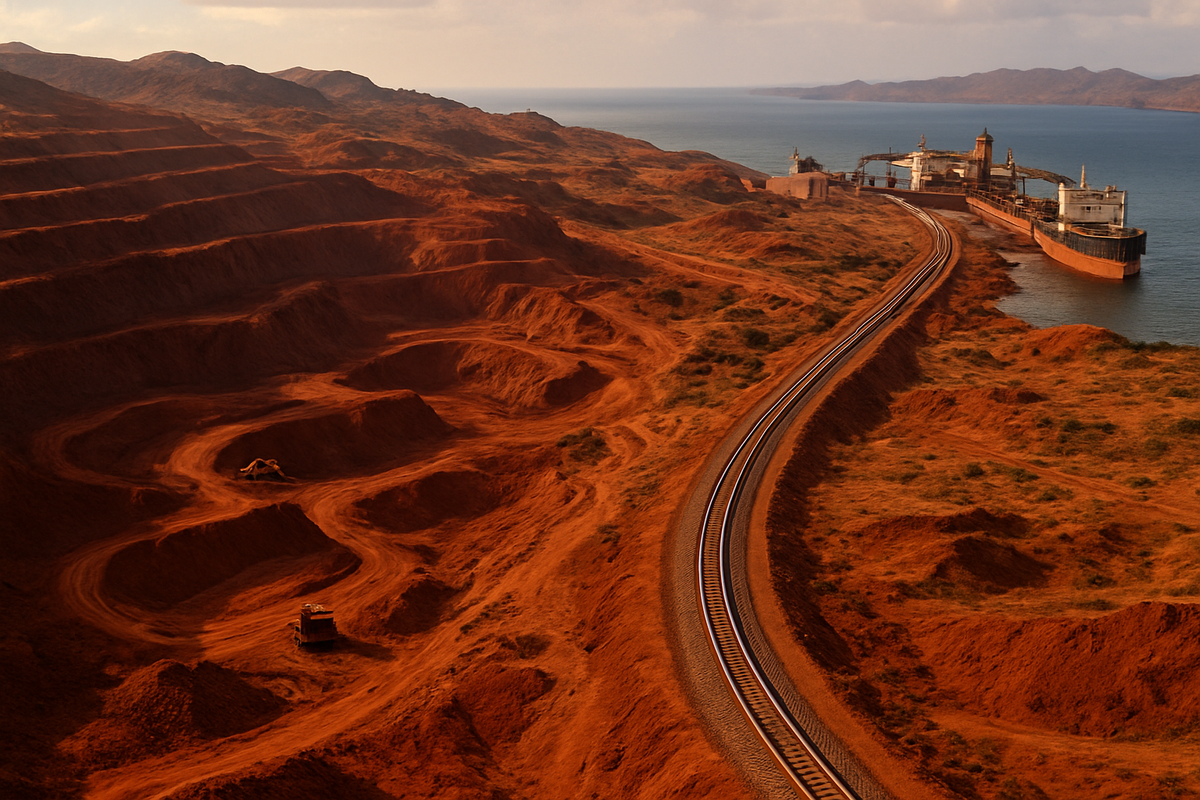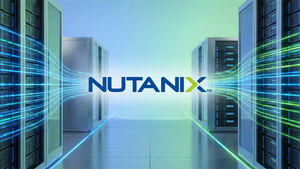
Guinea's long-anticipated Simandou iron ore project, a colossal undertaking valued at an estimated $23 billion, stands on the precipice of transforming the global mining landscape. With first shipments expected by the end of 2025, this monumental venture is set to introduce a significant new source of high-grade iron ore, promising to reshape supply chains, influence pricing dynamics, and bolster China's strategic influence in the commodity markets. As vessels arrive at Morebaya Port in November 2025 in preparation for inaugural exports, the world watches as this "Pilbara killer" project prepares to unleash its full potential.
The immediate implications are far-reaching. The sheer scale of Simandou's projected output – up to 120 million metric tons annually once at full capacity – is expected to create a substantial surplus in the seaborne iron ore market. This influx of high-quality ore, boasting an iron content exceeding 65%, is particularly attractive to steelmakers globally, especially those committed to decarbonization efforts. While offering a boost to greener steel production, this surge in supply is also widely anticipated to exert significant downward pressure on global iron ore prices, challenging established producers and potentially redrawing the competitive map for years to come.
Simandou's Grand Unveiling: A Decade in the Making
The Simandou project, often hailed as the world's largest untapped high-grade iron ore deposit, has been a saga of complex negotiations, immense investment, and ambitious infrastructure development spanning more than a decade. The project is strategically divided into two primary mining concessions, each with its own powerful consortium driving development:
Blocks 3 and 4 (Simfer JV): This joint venture is predominantly operated by (Rio Tinto) (ASX: RIO), holding a majority stake. Its partners include a consortium of influential Chinese stakeholders, notably Chalco Iron Ore Holdings (with significant ownership by Chinalco, Baowu, China Rail Construction Corporation, and China Harbour Engineering Company), alongside the Guinean government. Rio Tinto aims to escalate output from its Simfer mine to 60 million tons per year over 30 months, with initial production targeted for 2025.
Blocks 1 and 2 (Winning Consortium Simandou - WCS): This consortium comprises a powerful alliance of Chinese and Singaporean firms, including Winning International Group, Weiqiao Aluminium, and United Mining Supply Group, in partnership with the Guinean government. WCS is also targeting an annual output of 60 million tons, mirroring the ambitions of its counterpart.
Combined, these two groups are projected to achieve a staggering annual production of up to 120 million metric tons of high-grade iron ore once full capacity is realized, expected by 2028. A critical, and indeed transformative, component of the project is the extensive infrastructure development. This includes a monumental 600-650km trans-Guinean railway, designed to traverse challenging terrain, and a new deep-water port at Morebaya. This vital infrastructure is being co-developed and will be owned and operated by Compagnie du Trans-Guinéen (CTG), a joint venture where Simfer and WCS each hold a 42.5% equity stake, with the Guinean government securing a 15% free-carry equity stake. The arrival of vessels at Morebaya Port in November 2025 signals the imminent commencement of operations, a tangible milestone in this epic journey.
The total investment, while sometimes cited up to $25 billion, is more recently estimated at around $23 billion, with some reports suggesting a range between $20 billion and $26 billion. A significant portion of this capital, approximately $15 billion, is dedicated solely to the crucial rail and port infrastructure. Funding agreements for this infrastructure were formally signed in April 2024. Rio Tinto's capital funding share for the Simfer mine and associated infrastructure is approximately $6.2 billion, while Chinese state-owned enterprises are the dominant financiers, controlling roughly 75% of the overall project and largely underpinning the infrastructure development. For Guinea, this project is nothing short of an economic revolution, with government projections suggesting it could boost the nation's GDP by over 25% by 2030 and generate annual revenues of $1 billion at full production, potentially positioning it as Africa's second-largest mineral exporter.
Winners and Losers: A Shifting Landscape for Mining Giants
The advent of Simandou will inevitably create a ripple effect across the global mining industry, producing clear winners and presenting significant challenges for others.
Potential Winners:
Chinese Steelmakers: Companies like (Baowu Steel Group) and other major Chinese steel producers stand to be significant beneficiaries. Simandou offers a diversified, high-grade iron ore supply, reducing China's historical reliance on Australian and Brazilian sources. This strategic diversification enhances supply security and gives Chinese entities greater leverage in global commodity pricing, aligning with Beijing's long-term goals for resource independence. The high iron content (65% Fe+) is also ideal for reducing emissions in steel production, a key objective for China's environmental targets.
Rio Tinto (ASX: RIO): Despite the competitive landscape, Rio Tinto, as a major stakeholder in the Simfer JV, is poised to gain from its substantial investment. The project provides Rio Tinto with a new, world-class asset that will contribute significantly to its iron ore portfolio. While the overall market might face price pressure, Rio Tinto's participation ensures it remains a key player in the high-grade segment, catering to the growing demand for premium ores suitable for green steel initiatives.
Guinean Economy and Government: The Guinean government, with its 15% free-carry equity stake in both the mining consortia and the infrastructure joint venture, is a direct beneficiary. The project promises to be a transformative force for the nation, generating substantial tax revenues, creating thousands of jobs, and significantly boosting GDP. This influx of foreign direct investment and economic activity could accelerate Guinea's development and establish it as a major player in the global mineral supply chain.
Potential Losers/Challenged Entities:
Existing High-Cost, Lower-Grade Iron Ore Producers: The most vulnerable players are those operating higher-cost mines producing lower-grade iron ore. The massive influx of high-grade Simandou ore is expected to drive down overall iron ore prices. This will squeeze profit margins for less efficient producers, particularly those in Australia's Pilbara region (hence the "Pilbara killer" moniker) and Brazil, who rely on scale but may not match Simandou's quality or cost structure in a bearish market. Companies like (BHP Group) (ASX: BHP) and (Fortescue Metals Group) (ASX: FMG), while robust, will face intensified competition and potential downward pressure on their average realized prices.
Iron Ore Price Speculators: Those betting on sustained high iron ore prices may face significant headwinds. The anticipated supply surplus from Simandou could fundamentally shift market expectations, leading to a prolonged period of lower prices than seen in recent years. This could impact investment strategies and commodity-focused funds.
Wider Significance: Reshaping Geopolitics and Green Steel
The Simandou project transcends a mere mining operation; it is a geopolitical chess move and a pivotal moment for global decarbonization efforts. Its wider significance can be understood through several lenses:
Rebalancing Global Iron Ore Supply: For decades, Australia and Brazil have dominated the seaborne iron ore market. Simandou's entry significantly diversifies global supply, introducing a powerful new source from West Africa. This geographical diversification reduces concentration risk for steelmakers and alters the bargaining power dynamics, particularly benefiting nations seeking to reduce reliance on established suppliers. The project represents approximately 5-7% of global seaborne output once at full capacity, a substantial shift in market share.
China's Strategic Resource Security: Simandou is a cornerstone of China's long-term strategy for resource security. By heavily investing in and controlling a significant portion of the project, China aims to reduce its vulnerability to supply disruptions and price volatility from its traditional major suppliers. This move enhances Beijing's ability to influence global commodity pricing and ensures a stable, high-quality iron ore supply for its vast steel industry, which is crucial for its infrastructure development and economic growth.
Catalyst for Green Steel Production: The exceptionally high-grade nature of Simandou ore (over 65% Fe) makes it a game-changer for the burgeoning green steel movement. High-grade ore requires less energy in blast furnaces, directly contributing to lower carbon emissions. Furthermore, Simandou ore is particularly well-suited for Direct Reduction (DR) iron production, a key pathway for producing low-carbon steel. This aligns perfectly with global environmental targets and the increasing demand from industries for sustainably produced materials, making Simandou a crucial enabler for the steel industry's decarbonization journey.
Historical Precedents and Comparisons: The scale of Simandou evokes comparisons to past mega-projects that reshaped commodity markets, such as the development of Australia's Pilbara iron ore mines in the mid-20th century or the expansion of Brazilian iron ore production by (Vale) (NYSE: VALE). These projects fundamentally altered global supply and pricing structures. Simandou's impact is expected to be similarly profound, not just in terms of volume but also in its strategic and environmental implications, particularly given the current global focus on supply chain resilience and decarbonization.
What Comes Next: A New Era Unfolds
As Simandou transitions from construction to operation, the coming months and years will be critical in determining the full extent of its impact.
Short-Term Possibilities (2025-2027): The immediate focus will be on the successful ramp-up of mining and logistics operations. Initial shipments, expected by the end of 2025, will be closely watched for quality and consistency. Market analysts will scrutinize early production figures to gauge the pace at which the projected 120 million tonnes per year will enter the market. This period will likely see increasing volatility in iron ore prices as the market adjusts to the new supply dynamics. Lower-cost, high-grade producers might initially weather the storm better, while marginal, higher-cost operations could begin to feel significant pressure.
Long-Term Possibilities (2028 onwards): By 2028, with both Simfer and WCS aiming for full capacity, the global iron ore market will have fundamentally reconfigured. The sustained supply of high-grade Guinean ore is expected to create a structural shift towards lower average iron ore prices compared to the pre-Simandou era. This could lead to a long-term advantage for steelmakers, who will benefit from lower raw material costs. Furthermore, the project will solidify China's position in global commodity supply chains and accelerate the adoption of green steel technologies due to the abundant availability of ideal feedstock.
Strategic Pivots and Adaptations: Major iron ore producers will need to adapt their strategies. This could involve focusing more on value-added products, optimizing existing operations for greater efficiency, or exploring new markets for their specific ore grades. Diversification into other commodities or downstream processing could also become more attractive. Steelmakers, conversely, might accelerate investments in new blast furnace technologies or Direct Reduction plants designed to leverage the high-quality Simandou ore.
Market Opportunities and Challenges: Opportunities will emerge for companies specializing in logistics, port services, and railway maintenance in Guinea. Furthermore, the increased availability of high-grade ore could spur innovation in steel production processes. The main challenge will be for existing producers to maintain profitability in a potentially lower-price environment, necessitating stringent cost controls and a relentless pursuit of operational excellence. The geopolitical implications, particularly concerning China's enhanced influence, will also present ongoing strategic considerations for Western nations and their resource policies.
Wrap-Up: A Paradigm Shift for Global Commodities
The Simandou iron ore project represents a paradigm shift in the global commodities market. Its imminent operationalization, marked by the arrival of vessels at Morebaya Port in November 2025, signals the culmination of a multi-decade effort and the dawn of a new era for iron ore supply. The sheer scale of its $23 billion investment and projected 120 million tonnes annual output will not only inject a significant new volume of high-grade ore into the market but also fundamentally alter pricing structures and geopolitical power dynamics.
The key takeaways are clear: expect increased global supply, which will likely exert downward pressure on iron ore prices, particularly impacting higher-cost producers. China's strategic objective of diversifying its iron ore sources and gaining greater control over commodity pricing will be substantially advanced. Crucially, Simandou's high-grade ore is poised to become a vital enabler for the global green steel movement, supporting the industry's decarbonization efforts.
Moving forward, investors should closely monitor the project's ramp-up schedule and actual production volumes. The pace at which Simandou's output enters the market will be a key determinant of near-term price volatility. Long-term, the focus should be on how established mining companies adapt their strategies to a more competitive, potentially lower-price environment, and how steelmakers leverage this new, high-quality supply for more sustainable production. The lasting impact of Simandou will be a more diversified, and potentially more cost-effective, global iron ore market, with significant implications for both economic development and environmental sustainability.
This content is intended for informational purposes only and is not financial advice






